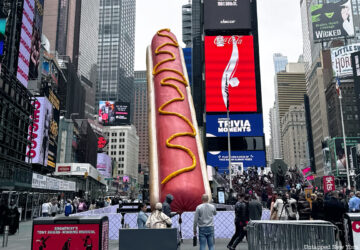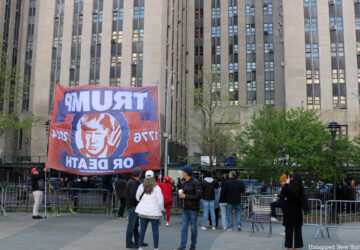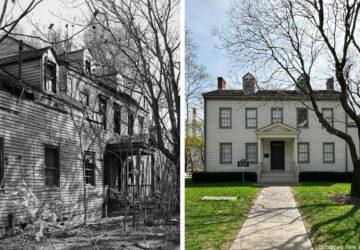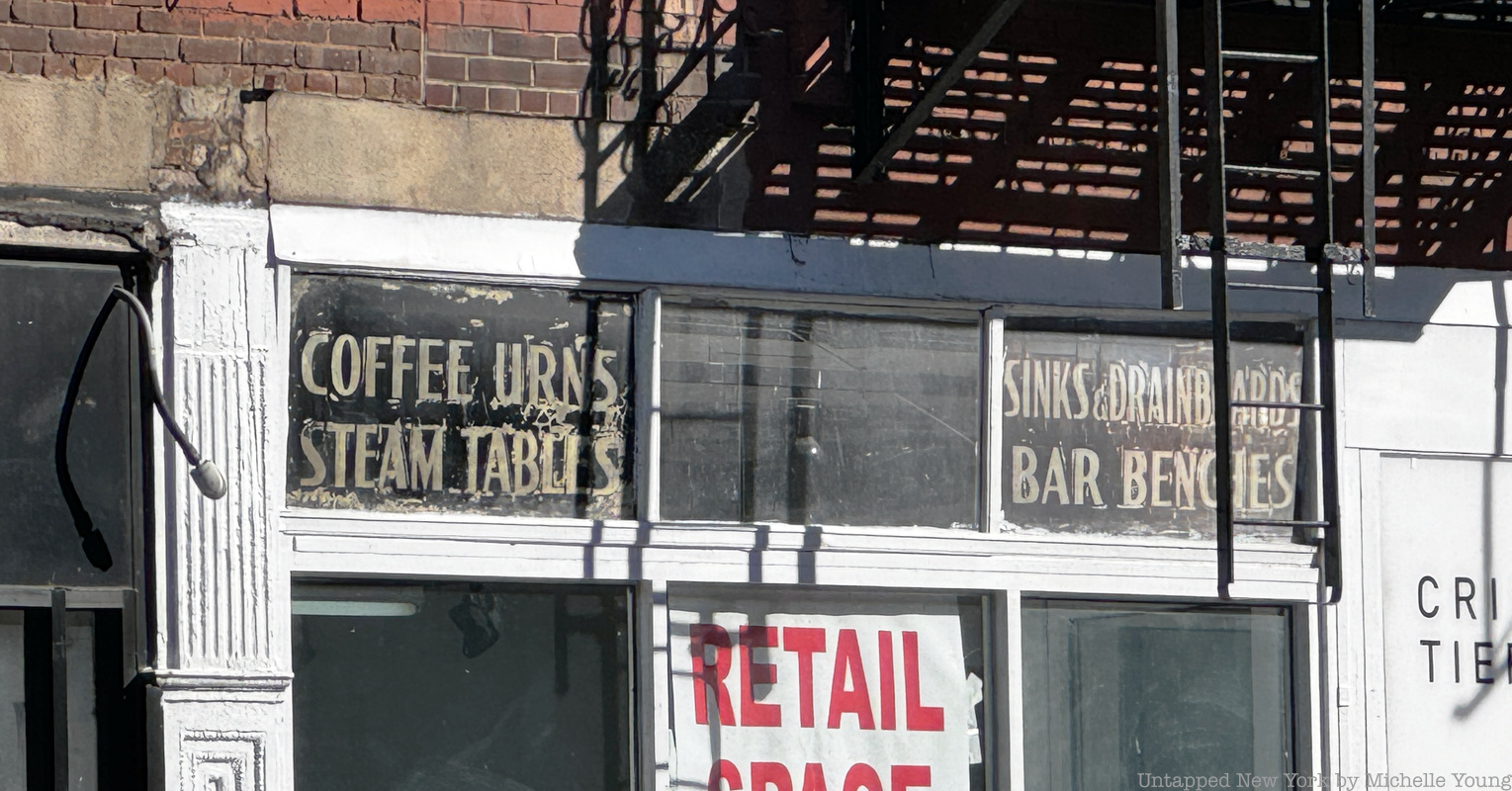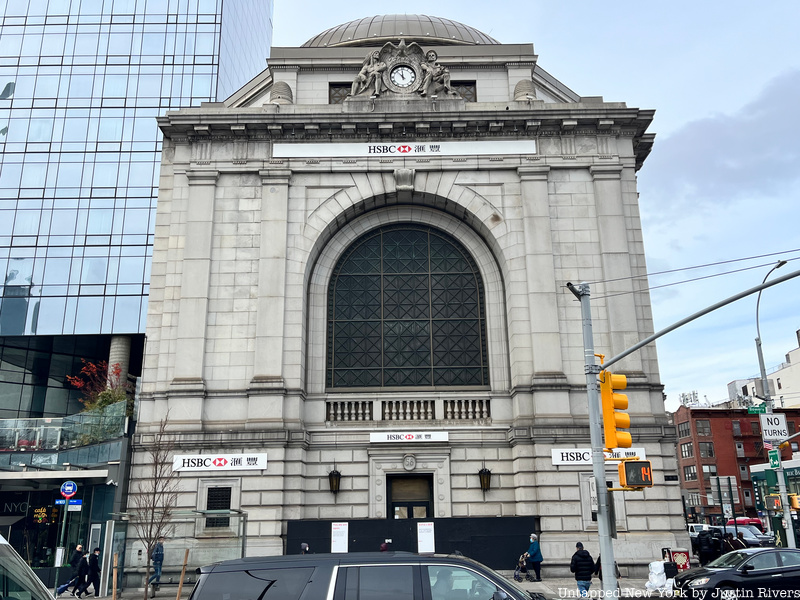Buildings on the Bowery, one of New York City’s oldest streets, have been reinvented again and again throughout the centuries, often leaving traces of their former lives still visible. From the first period of the neighborhood’s Dutch settlers in 1626 to the Georgian and Federal buildings that functioned as townhomes and artisan workshops in the late eighteenth and early nineteenth centuries, to the bloom of concert saloons and dime museums, with artist lofts trailing close behind, The Bowery’s diverse catalog of design and function reflects New York City’s history. Echoes of this past are often unveiled if you look closely and spot remnants like the ghost sign at 219 Bowery.
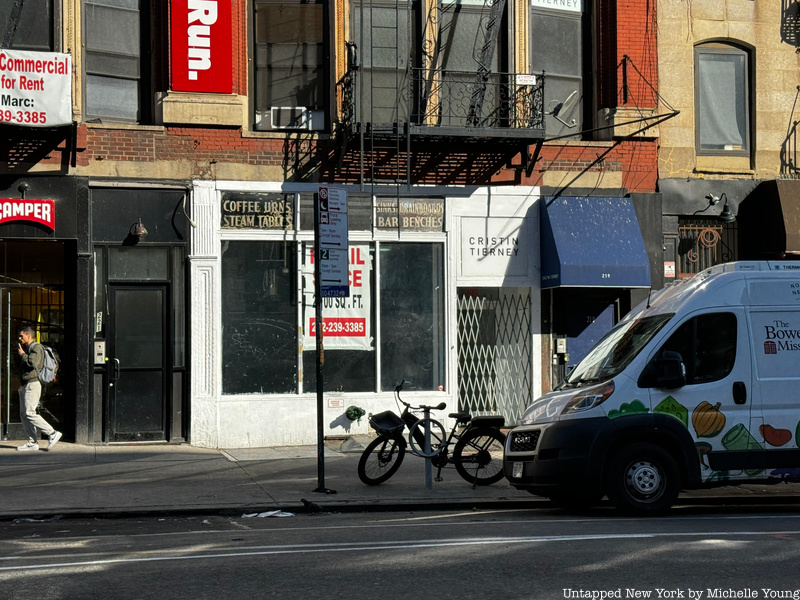
This ghost sign is a rare survivor of Lower Manhattan’s early history. The building it appears on was designed by James Ware, the father of the dumbbell tenement. The pair was constructed in 1889 to serve as lodging houses with ground-floor storefronts. The transitional style of these five-story brick and stone buildings pairs Renaissance Revival symmetry with the projecting bays of the Queen Anne style in a loft layout. Rather than in dumbbell form, the loft layouts were built out to the lot lines on three sides. This style allowed for dormitory floor plans, housing men in large open wards that nominally met the legal requirements of the time.
An early tenant of 219 Bowery was The Zettler Rifle Club. The group held annual shooting competitions at its indoor range where men could win cash prizes. When the rifle club left in the mid-1890s, Julius Schulz opened a saloon. From 1890 until 1966 the buildings were known as the Alabama House, part of the Lyons Hotel Company Empire.
The Alabama House became one of the Bowery’s infamous flophouses. These lodging houses offered no amenities except a place to sleep. Residents of the Alabama were fraudsters, thieves, bootleggers, and all sorts of seedy characters. A restaurant that operated on the ground floor was frequently used to serve charity dinners to the “Bowery bums.”
In 1967, the Alabama was converted into artists’ studios. Entering the mid-nineteenth century, floods of artists, poets, musicians, etc., along with restaurant supply stores, colonized The Bowery. The area around the Alabama, which the New York Times had referred to as a “skid row,” was evolving into “Restaurant Row.”
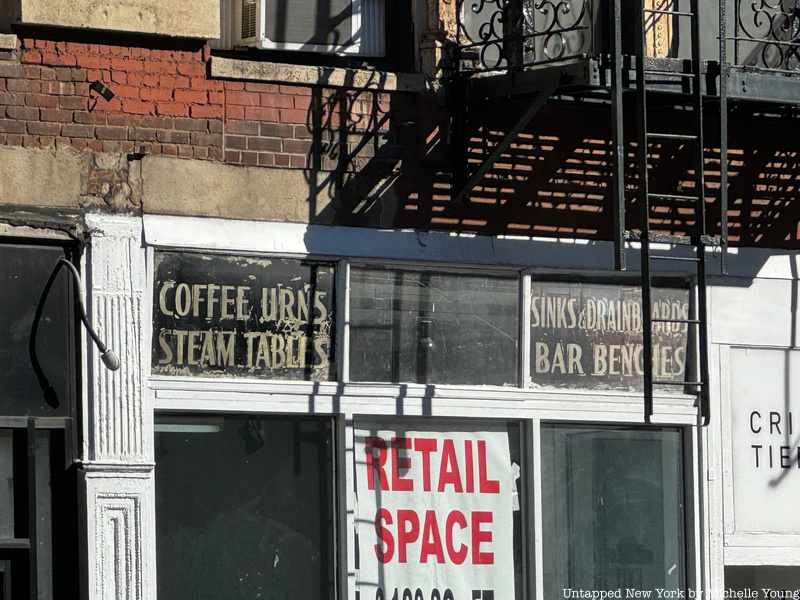
The ghost sign you can see today is visible in a 1940 tax photo. At the time, the storefront at 219 Bowery was occupied by Star Kitchen & Bar Equipment. In the old photo, the sign reads, “Coffee urns” and “steam tables” as it does today, but you can also see what was once written in the central window, “Metal Counters,” “Fruit Coolers,” and the third panel once read “Fountains” and “Sink Hoods.” Those last two were changed at some point to “Sinks & Drainboards,” and “Bar Benches” as it reads today.
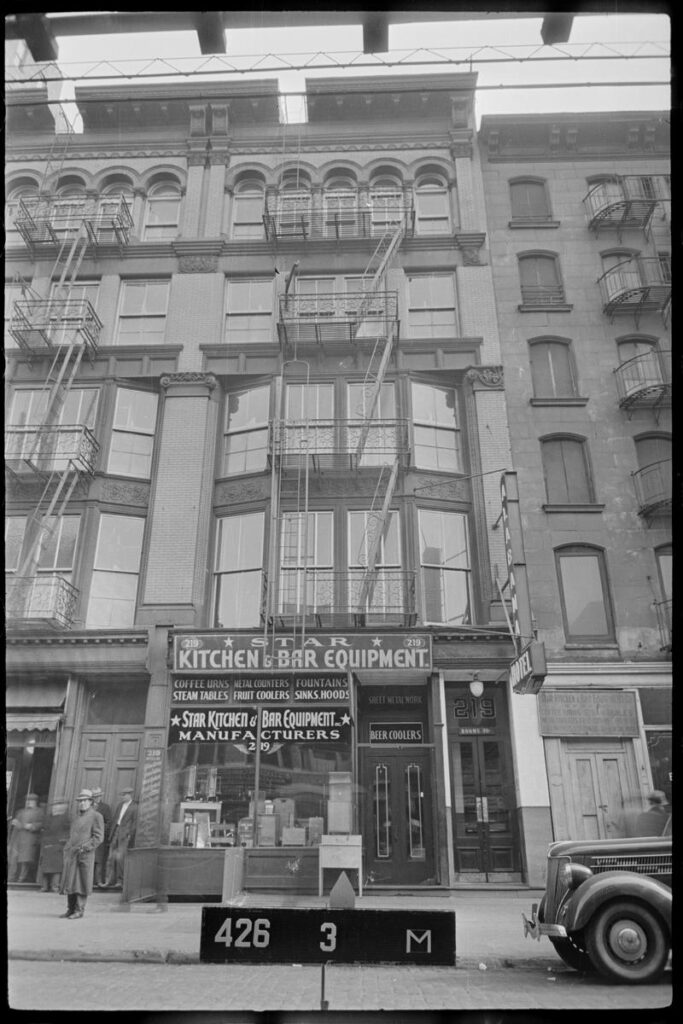
At some point after Star Kitchen & Bar Equipment vacated 219, both storefronts were occupied by Chair Up, Inc, which supplied restaurants with chairs, tables, and other supplies. Another interesting tenant of 219 Bowery was Pelican Footwear. Joseph Bascetta and Carole Reidford ran this custom shoe store in the 1970s. The couple designed, fabricated, and sold all their shoes from their Bowery loft. Their funky platforms garnered famous clientele like David Bowie and the New York Dolls.
In 2019, the 219 storefront was occupied by Vault by Vans, a short-lived shoe store pop-up and event space. Cristin Tierney Gallery occupies the second floor while the ground floor is now up for rent.
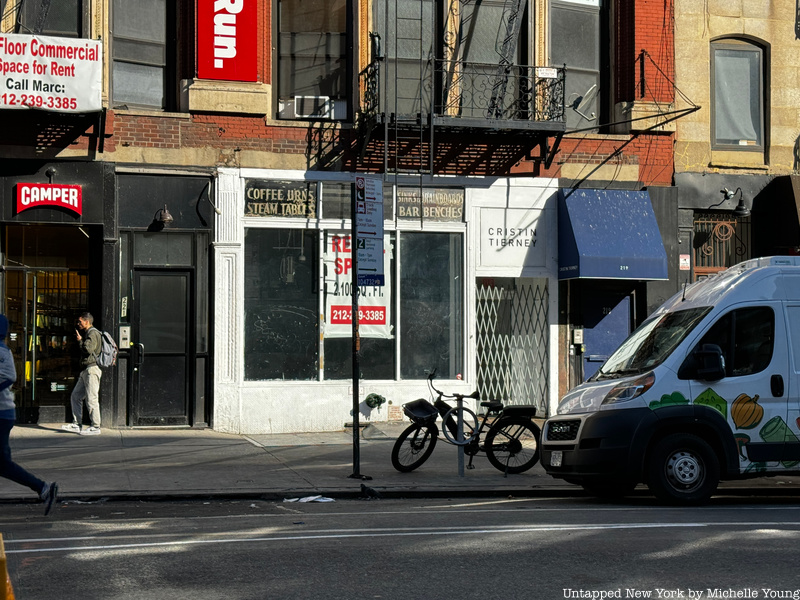
This ghost sign marks the constant presence and medley of industries that populate the neighborhood. At street level, this ghost sign stamps the district’s restaurant supply businesses that continue to spill onto Bowery’s broad sidewalks. However, 219 Bowery also tales a complex narrative that extends to its upstairs, where artists once stained their canvases and tuned their creative voices. And, before them, it was the Alabama House where legions of men sought refuge.
Ghost signs offer insight into the characteristics of what ‘once was,’ but they also tell of the city that grew up around. As praised by preservationist Anthony M. Tung for its “disjointed beauty,” The Bowery contributes to New York’s eclectic streetscape and architecture for its variety in age, style, scale, function, and texture. As it transforms and expands, ghost signs serve as important reminders of what was and what is as we wait for the ghost signs of the future.
Next, join us on our new tour, Secrets of The Bowery, and check out Puzzling Ghost Signs of NYC
